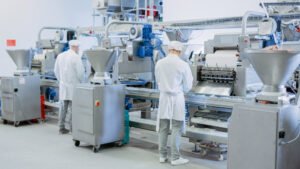Meat Processing and Technology: A Modern-Day Investigation
In today’s fast-paced world, technology is playing an increasingly important role in all industries, including meat processing. With advancements in robotics and automation, the meat processing industry is undergoing a transformation like never before.
This investigation delves into the use of robots and technology in meat processing and what it means for the future of the meat industry. Speaking of which, only 3% of global industrial robot installations are for food and beverage applications!
The Evolution of Technology in Meat Processing
The journey of technology within the meat processing sector has been a remarkable one, marked by continuous innovation and advancement. Historically, the industry relied heavily on manual labour, with butchers and workers performing the bulk of meat cutting, cleaning, and packaging by hand. The advent of mechanical cutting devices and refrigeration systems in the 19th and early 20th centuries marked the initial steps towards modernisation.
However, it was the later introduction of computer-controlled machinery and sophisticated software that truly revolutionised meat processing. Global robot installations in the food and beverage industry grew by 12% year on year from 2016 to 2021. These technological advancements allowed for greater precision in cuts, improved monitoring of production processes, and enhanced tracking of meat through the supply chain.
The integration of robotics in recent years has further propelled the industry into a new age, where automation and efficiency reign supreme. This technological evolution has not only reshaped the operational dynamics of meat processing but also set new standards for safety, quality, and productivity in the sector.
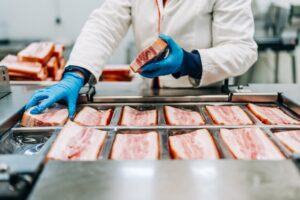
Types of Robots and Technologies Used in Meat Processing
In the realm of meat processing, a diverse array of robots and technological systems plays pivotal roles. Automation in this sector has seen the introduction of highly specialised robots capable of performing tasks with astonishing accuracy and speed. Among these, robotic arms have become indispensable for their precision in cutting and trimming meat, ensuring uniformity that manual processing could rarely achieve.
Moreover, advanced vision systems are employed to inspect meat quality, using sophisticated algorithms to detect imperfections or contaminants that might compromise safety standards. Packaging robots, equipped with the capability to handle delicate operations, have also been instrumental, streamlining the packing process whilst minimising waste and maximising efficiency.
Additionally, technologies such as RFID tagging and blockchain are being integrated to bolster traceability from farm to fork, offering unparalleled transparency in the supply chain. These innovations signify a significant shift towards a more efficient, safe, and sustainable approach in meat processing, heralding a new era for the industry.
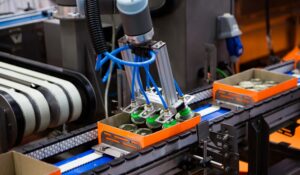
Benefits of Using Robots in Meat Processing
The incorporation of robotics into meat processing heralds a multitude of advantages that extend beyond mere efficiency gains. For starters, the precision and consistency afforded by automated systems enhance the quality of meat products, ensuring that each item meets stringent safety and quality benchmarks. This not only mitigates the risk of contamination but also elevates consumer confidence in the products they consume.
Furthermore, the automation of repetitive and physically demanding tasks reduces the incidence of workplace injuries, contributing to a safer working environment for all involved. By streamlining operations and optimising resource use, robotics also play a crucial role in minimising waste, thereby promoting a more sustainable approach to meat processing.
This shift towards automation, while upfront costs may be significant, ultimately drives down operational expenses, offering a long-term return on investment that can significantly bolster a company’s bottom line.
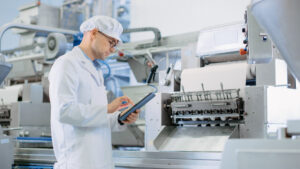
Challenges and Drawbacks of Automation in the Industry
Whilst the integration of robotics within meat processing heralds numerous advancements, it inevitably brings to light certain hurdles. One poignant issue lies in the displacement of labour, as machines assume roles traditionally occupied by human workers, sparking debates over job security and the future workforce landscape. The automation journey is also not without its technical hitches. Systems can experience malfunctions or breakdowns, leading to operational disruptions that can be costly and time-consuming to rectify.
Furthermore, the initial investment in these sophisticated technologies can be prohibitively expensive for smaller enterprises, potentially widening the gap between large and small players in the industry. Navigating these challenges requires a balanced approach, focusing on innovation while considering the socio-economic implications of widespread automation.
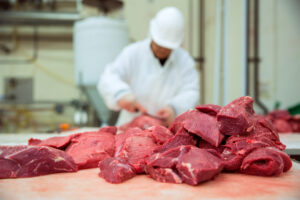
Impact on Workers and Employment in the Meat Industry
The emergence of robotics and automation in meat processing has brought about a significant period of change for workers and employment in the sector. Whilst it is true that some roles traditionally carried out by humans are being replaced by machines, this transition also opens up opportunities for the creation of new jobs, particularly those focused on overseeing, maintaining, and programming these automated systems. The need for a skilled workforce to manage and interact with these technologies emphasises the importance of ongoing training and development programmes.
Therefore, businesses in the industry must prioritise investing in their staff, providing opportunities to acquire new skills and competencies relevant to this technologically advanced working environment. This approach not only facilitates the transition to a more automated future but also helps to maintain a sense of job security among employees, reassuring them that their roles are evolving rather than disappearing.
This dynamic shift presents an opportunity to improve the quality of employment within the meat processing industry, promoting a workforce that is adaptable, skilled, and prepared to meet the demands of a modernised sector.
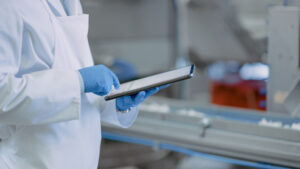
Consumer Perception and Market Trends
In the meat processing industry, consumer attitudes are profoundly influenced by concerns over food safety, ethical standards, and environmental sustainability. This shift in consumer behaviour underscores the necessity for transparency and accountability from farm to table. The integration of technologies such as blockchain and RFID tagging is instrumental in meeting these demands, providing consumers with the assurance they seek regarding the origin and handling of their meat products.
Moreover, the market is increasingly favouring companies that leverage technology to bolster food safety and quality, positioning these businesses as leaders in a competitive landscape. Staying attuned to these consumer preferences and market trends is crucial for industry players aiming to remain relevant and succeed in a rapidly evolving sector.
The move towards technology-driven processes, therefore, not only caters to operational efficiency but also aligns with the growing consumer emphasis on ethical and sustainable meat consumption.
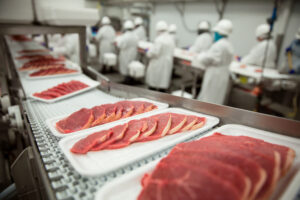
Read More:
Read full article Share on X
